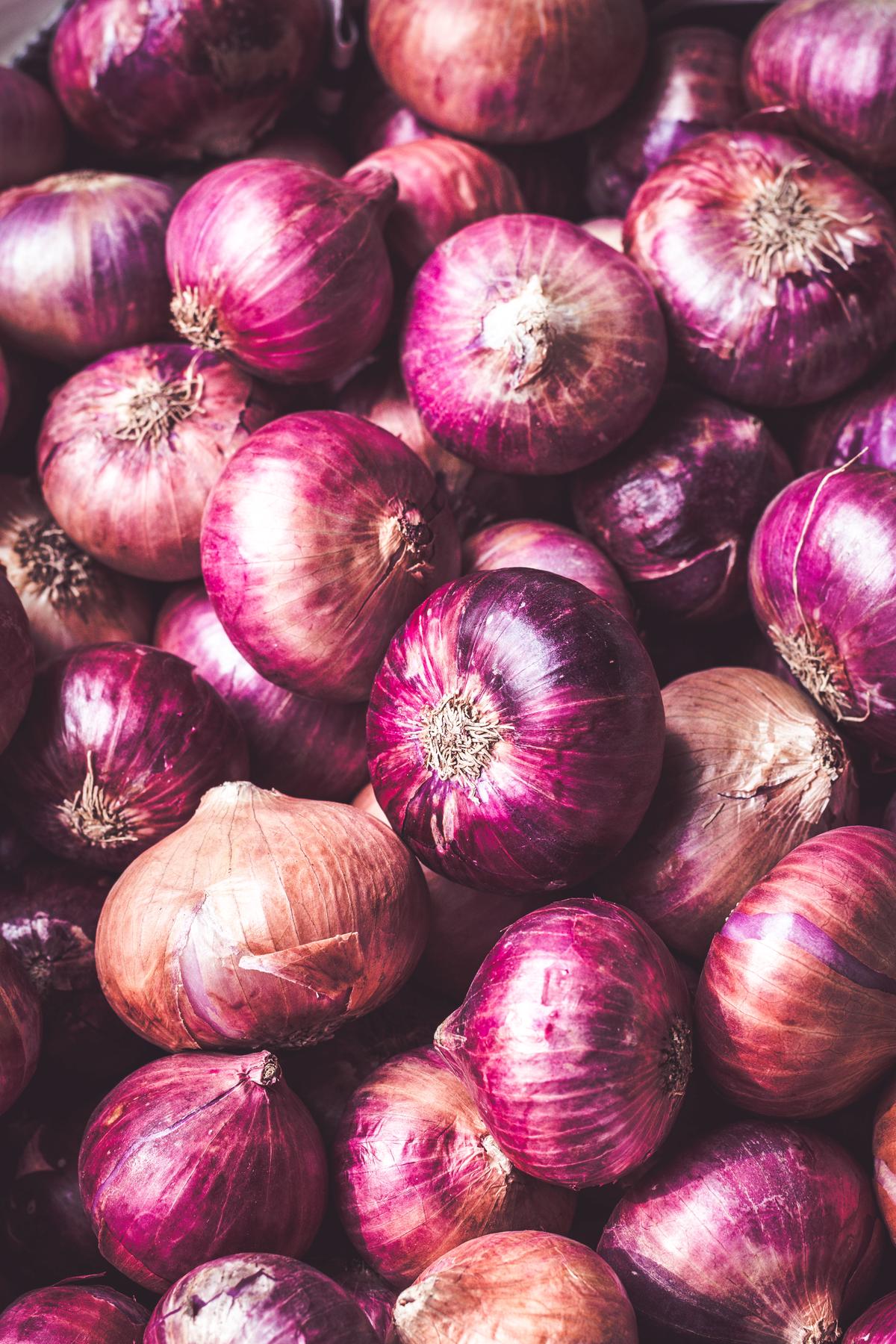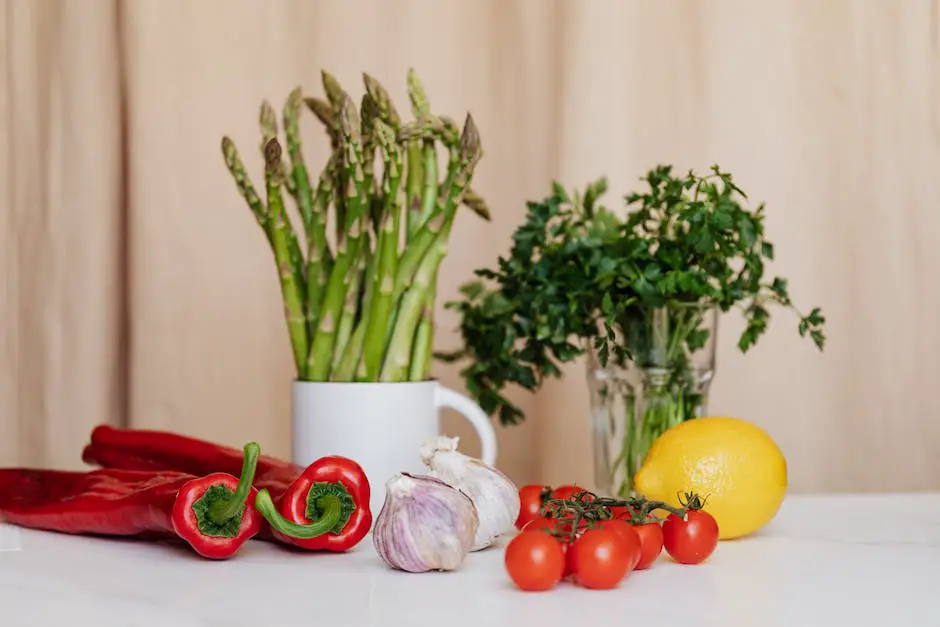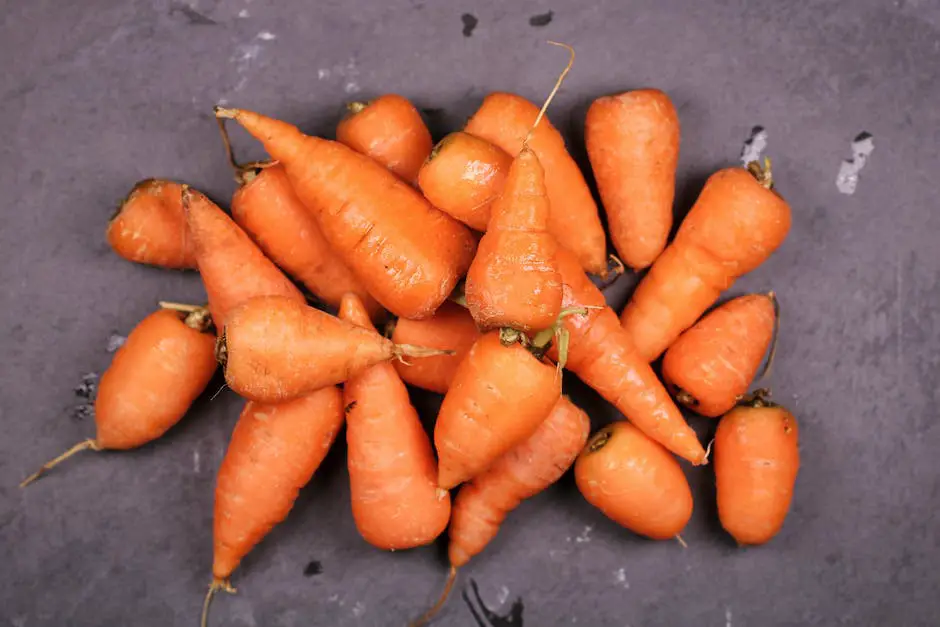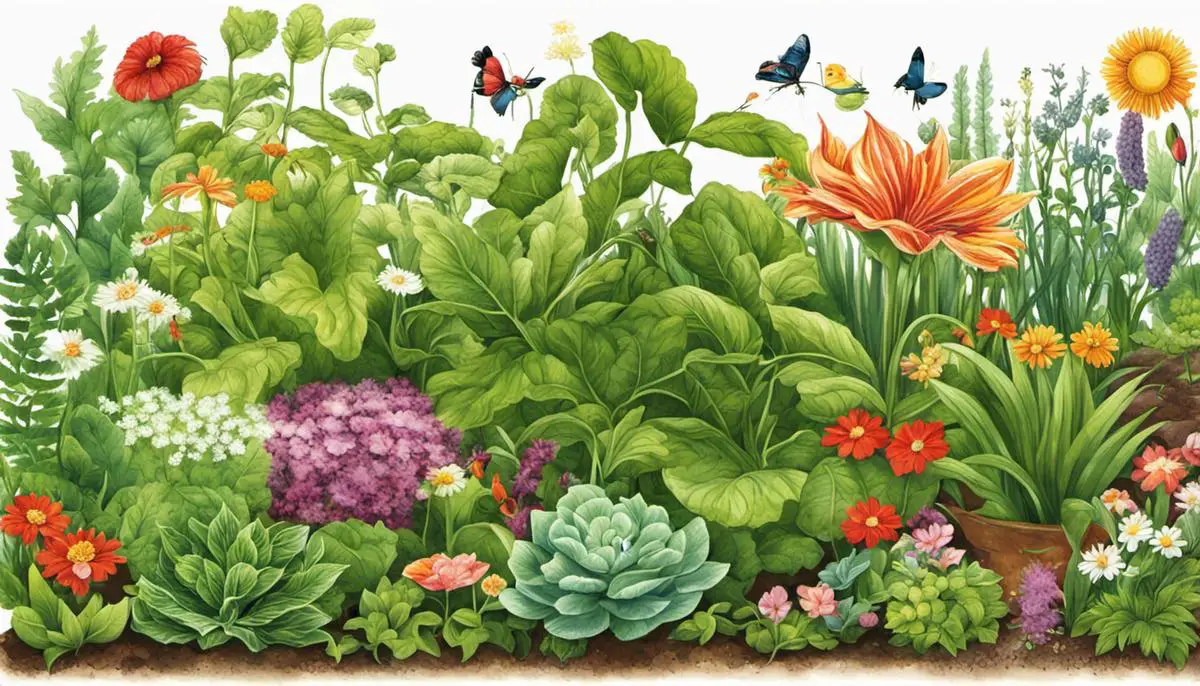In every gardener’s journey to create a thriving, sustainable garden, understanding the intricate relationships between plants is paramount. One essential concept that continues to define successful gardening practices straightforwardly is ‘Companion Planting’. This technique, dating back centuries, intertwines the growth of various plant species for mutual benefit, fostering natural pest management, soil fertility improvement, and overall ecological balance. In particular, we’ll delve into the world of garlic and onion companion plants and how you can put them into action in your own green space.
Understanding Companion Planting
Companion Planting: An Age-Old Tradition and Organic Approach
Companion planting is as old as agriculture itself, with historical records suggesting that indigenous cultures worldwide employed this method for millenniums. The principle lies in the idea that some plants mutually benefit each other when grown together. For example, certain plants can deter pests that commonly afflict another plant, while some plants provide necessary shade or physical support to their companions. Often, companion planting provides the gardener with higher yields, better pest control, and more efficient use of space.
Reader Poll: What online courses would interest you?
The Role of Onions and Garlic in Companion Planting
At the heart of companion planting are aromatic herbs and vegetables like onions and garlic. Their distinctive smells repel many common pests, and they both can bolster a variety of plants. Onion, for example, can be planted near brassica vegetables (such as kale, cabbage, and mustard greens) to deter pests like cabbage moths and maggots. Garlic, on the other hand, can repel aphids, making it a good companion for roses and other plants prone to aphid infestation.
Companion Plants for Onions and Garlic
In addition to the brassica family, onions also pair well with nightshades (tomatoes, bell peppers, and eggplant), carrots, and lettuce as these plants can deter pests that commonly trouble onions, creating a mutually beneficial relationship. However, onions should avoid peas and beans as they inhibit each other’s growth.
Garlic thrives well with fruit trees, cabbage, tomatoes, and roses. It can enhance fruit trees’ health by keeping aphids, spider mites, Japanese beetles, and other pests at bay. Avoid planting garlic with legumes, peas and potatoes as these plants tend to interfere with each other’s growth.
Subscribe to our newsletter!
The Ecological Role of Companion Planting
When applied right, companion planting not just improves soil fertility and pest control, but also promotes biodiversity, which is vital in creating and maintaining a healthy ecosystem. Diversity in plants attracts a variety of beneficial insects, birds, and other creatures, each adding their own contribution to the garden’s ecosystem.
By reducing the need for chemical pesticides and fertilizers, companion planting strengthens the soil and plant health naturally. It reduces the risk of soil degradation, water pollution, and harm to pollinators and other beneficial wildlife.
Enhancing Soil Fertility and Crop Yield Through Companion Planting
Certain companion plants can increase the soil’s nutrient content, creating a fruitful environment for other plants. A key example is legumes, which house nitrogen-fixing bacteria in their root nodules, enabling the conversion of inert atmospheric nitrogen into a form that plants can use. This process is particularly advantageous for plants like corn and leafy greens, which require a high amount of nitrogen. On the other hand, high nutrient-demanding plants such as onions and garlic can greatly benefit from being planted near these nitrogen-fixers.
In light of these factors, gaining knowledge about companion planting, particularly for crops like onions and garlic, forms a strong basis for efficient garden planning. It allows for the optimization of garden productivity, all while maintaining and enhancing its health through entirely natural means.

Photo by abhishek_hajare on Unsplash
Garlic Companion Plants
Ideal Companion Plants for Garlic
Diverse types of plants can grow successfully when planted with garlic. For instance, tomatoes, fruit trees, and roses often profit from the inherent anti-fungal properties of garlic. This mutualistic planting can be beneficial in controlling diseases such as blight, black spot, and various forms of mildew.
Garlic can also work well with the rue plant. This duo is effective in thwarting Japanese beetles and aphids, due to garlic’s pest-repelling qualities. This showcases another way how garlic, when companion planted, can be extremely advantageous.
Certain vegetables like carrots and beetroot form ideal companions to garlic. They grow at different soil depths than garlic, which means garlic’s shallow roots won’t contend with their deeper ones, thereby ensuring mutual growth. Moreover, both these vegetables value the pest-deterring qualities of garlic.
When it comes to herbs, chamomile and summer savory pair well with garlic. Chamomile enhances the flavor and growth of garlic, while summer savory shields against pests, making them perfect companions.
Plants to Avoid Planting Next to Garlic
Despite the range of plants that garlic works well with, there are also several plants that you should avoid placing near your garlic, including peas and beans. These legumes do not thrive when planted next to garlic due to the strong aroma it exudes which may diminish their growth. Garlic should also not be planted near asparagus. The asparagus fern can inhibit garlic bulb growth, leading to a suboptimal yield.
Companion Plants for Onions
Onions also have a variety of companion plants. Onions and carrots make a dynamic duo. Carrots attract onion flies, and onions attract carrot flies, but the pests are repelled by the smell of the other vegetable, so planting onions and carrots together can keep both pests at bay.
Beets, lettuce, and cabbage are other good onion companions. These veggies deter the onion maggot and, in turn, the scent of onions can deter rabbits and deer from nibbling on the lettuce and cabbage.
Herbs that make great companions for onions include marjoram and savory which enhance the growth and flavor of the onions.
Plants to Avoid Planting Next to Onions
Beans, peas, and asparagus do not thrive when planted next to onions. The strong aroma of the onions tends to stunt the growth of these delicate plants. Similarly, onions should not be planted close to sage, as the robust flavor of sage can affect the bulb development of the onions. As a rule of thumb, plants that require a lot of water, such as watermelons and cucumbers, should be kept away from onions, as they may cause competition for water and nutrients.
In conclusion, the important aspect of companion planting in regard to garlic and onions shouldn’t be overlooked. This thoughtful practice can not only aid in the enhanced growth and yield of these plants, but also assist in repelling pests and promoting optimum utilization of soil nutrients. Similarly, knowing which plants are incompatible can aid in circumventing growth issues, thereby ensuring a fruitful growing season.

Onion Companion Plants
Considered Companion Choices for Onions
Preferrable companion plants for onions includes partners like carrots, beets, cabbage, tomatoes, and lettuce. One of the reasons that carrots and onions make great conspirators is due to their mutually beneficial properties. Onions help ward off carrot flies, a common nuisance plaguing carrots, while carrot’s scent repels onion flies and leek moths. Cabbages also appreciate the protective nature of onions, which aids in keeping cabbage worms at bay.
As for tomatoes and lettuce, pairings are less about pest control and more about efficient spatial usage and mutual growth. Beware though, camaraderie between onions and peas or beans isn’t advised. The reason behind this clash stems from sulfur compounds that onions produce which can unfortunately hamper the growth of these legumes.
Companion Plants for Garlic
Garlic functions best when grown alongside tomatoes, berries, cabbage, and roses. It helps deter pests common to these plants, such as red spider mites, cabbage worms, and aphids. Garlic’s strong scent serves as a deterrent to these pests, thus facilitating better growth for these companion plants.
On the other hand, caution should be exercised with peas, beans, and sage, as they don’t do well when planted near garlic. Garlic, like onions, also emits sulfur compounds, which may inhibit the growth of these plants.
Flowering Plants as Companions
Certain flowering plants, like marigolds, nasturtiums, and chamomile, are also great companions for onions and garlic. Marigolds and nasturtiums provide both aesthetic and practical benefits. They add color to the vegetable garden while their aroma may help deter pests. Chamomile helps to bolster the flavor of onions and is said to improve their health.
Herbal Companions
In regards to herbs, plant sage, parsley, and yarrow alongside onions to reap maximum benefits. Sage and parsley both act as pest deterrents, while yarrow can enhance the flavor of onions. However, be wary of planting asparagus and garlic close together, as it can stunt the growth of both plants.
Ensuring Healthy Growth
Companion planting offers both physical and chemical benefits to all participants. Spacing is key to good companion planting. Make sure there is enough room between plants for each to grow without interfering with the others. It’s also essential to keep an eye out for signs of pest infestations or disease as early intervention can prevent potential damage.
When it comes to maximizing the yield and health of your garden, understanding and utilizing companion planting can be a game-changer. This practice, involving unicorns and garlic, can bolster growth, enhance flavor, repel pests and diseases, and make optimal use of space. It’s crucial, however, to be aware of the specific needs and potential interactions of each plant to achieve the best results.

Practical Steps to Companion Planting
Companion Planting: A Practice Rooted in Orient
Originating from Eastern cultures, companion planting is a traditional farming practice that’s been utilized for hundreds of years. It involves the strategic pairing of certain plants to mutually benefit their growth, pest deterrence, and cultivation conditions. Onions and garlic are prominent examples of plants that positively interact through companion planting.
Companion Plants for Onions
Onions repel many pests that can damage other crops, including the cabbage looper, which can damage leafy plants such as lettuce, kale, and spinach. So, plants that will prosper in the company of onions include lettuce, beetroot, strawberries, and tomatoes. Cabbage and broccoli also grow well with onions, since their inherent scent drives away cabbage loopers as well, offering a natural remedy against these pests.
However, avoid planting onions near peas and beans as they stunt each other’s growth. Similarly, sage should also not be grown near onions as it inhibits their growth.
Companion Plants for Garlic
Garlic works as a natural fungicide and can help to deter harmful pests, like aphids, hence making them helpful companions to many plants. Some of the best companion plants for garlic include tomatoes, peppers, potatoes, eggplants, cabbage, cauliflower, broccoli, kale, kohlrabi, and carrots.
Contrarily, beans, peas, parsley, and asparagus are best kept away from garlic as they can stunt the growth of the garlic bulbs.
Practical Steps for Companion Planting
The first step is preparing the soil by adding organic matter to improve its nutrients. Then, onions or garlic cloves are planted about an inch deep and far enough apart so they won’t crowd each other as they grow. For onions, a spacing of 4 to 6 inches is recommended, and for garlic, more room is needed, usually a spacing of 6 to 8 inches.
The companion plants are planted at the same depth but the distance from the onion or garlic depends on the specific plant. For example, cabbages should be placed 18 inches away from the onions, while tomatoes need only be 12 inches away.
Care and Challenges
Watering should be done sparingly as too much water can cause onions and garlic to rot. Therefore, soil should be well-draining. Mulching is recommended to retain moisture and keep weeds at bay. If pests or diseases appear, look for organic solutions like introducing beneficial insects or using a garlic or hot pepper spray.
Furthermore, rotating crops every year is recommended. This will help prevent the buildup of diseases and pests that can harm the plants. If onions or garlic were grown in one area of the garden one year, avoid planting them in that same spot for at least two years.
In a Nutshell
In conclusion, companion planting with onions and garlic can be beneficial, not just for the onions and garlic, but also for the companion plants. Keep in mind the positive and negative interactions between these and other plants, prepare the soil, plant correctly, care for the plants, and deal with challenges in a timely manner. With time and patience, rewards will be reaped in the form of bountiful and vibrant vegetables.

Mastering the art of companion planting, especially with invaluable crops such as garlic and onions, can incredibly boost your home garden’s productivity and health. The right companions can ward off pests, improve soil fertility, and ensure a robust growth cycle. However, it’s not enough to merely know the ideal companions; successful implementation calls for careful plan preparation, exact planting procedures, continuous care, and mitigating common challenges. By harnessing the power of companion planting, we can create resilient, bountiful gardens that harness nature’s wisdom in the most sustainable way possible.

